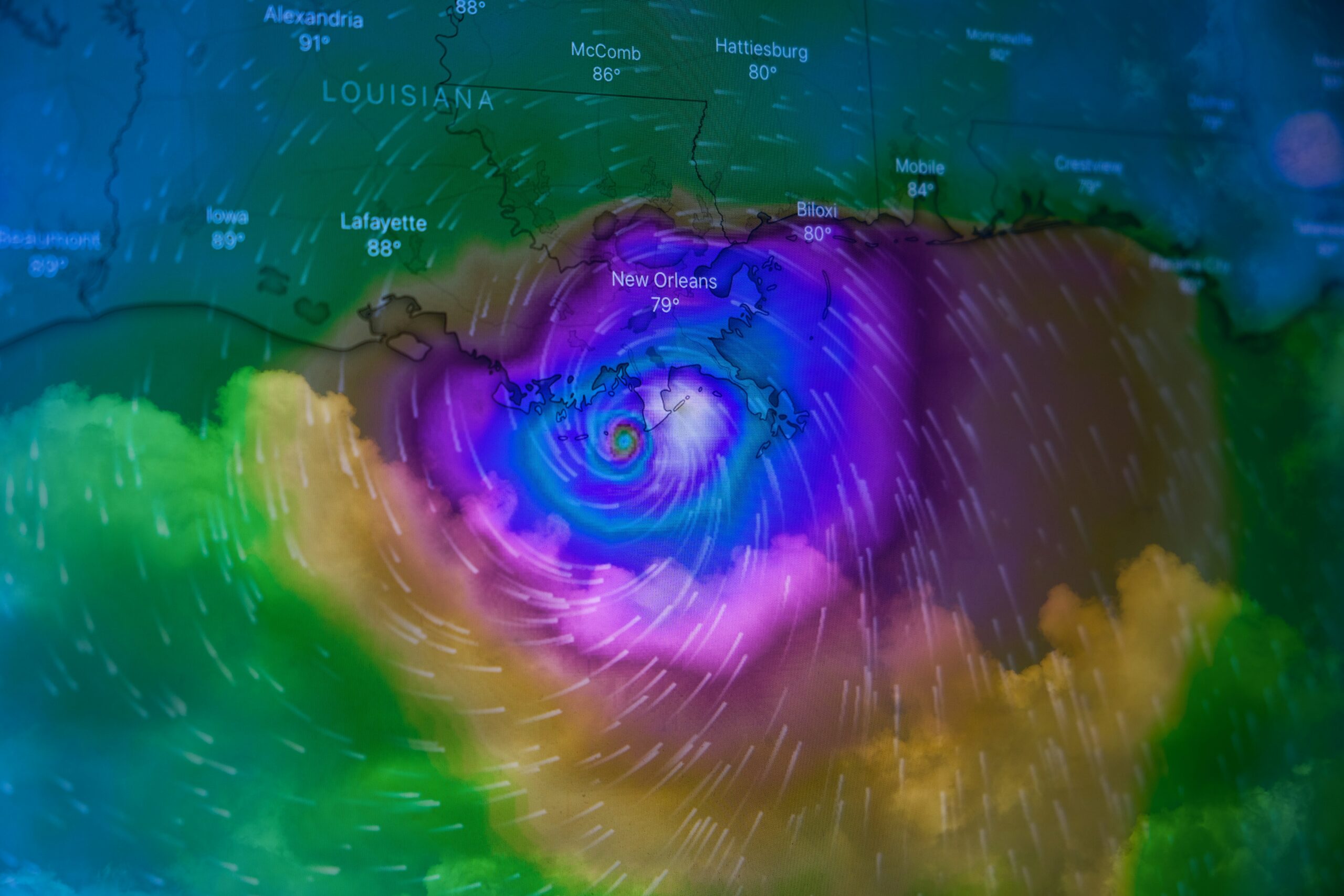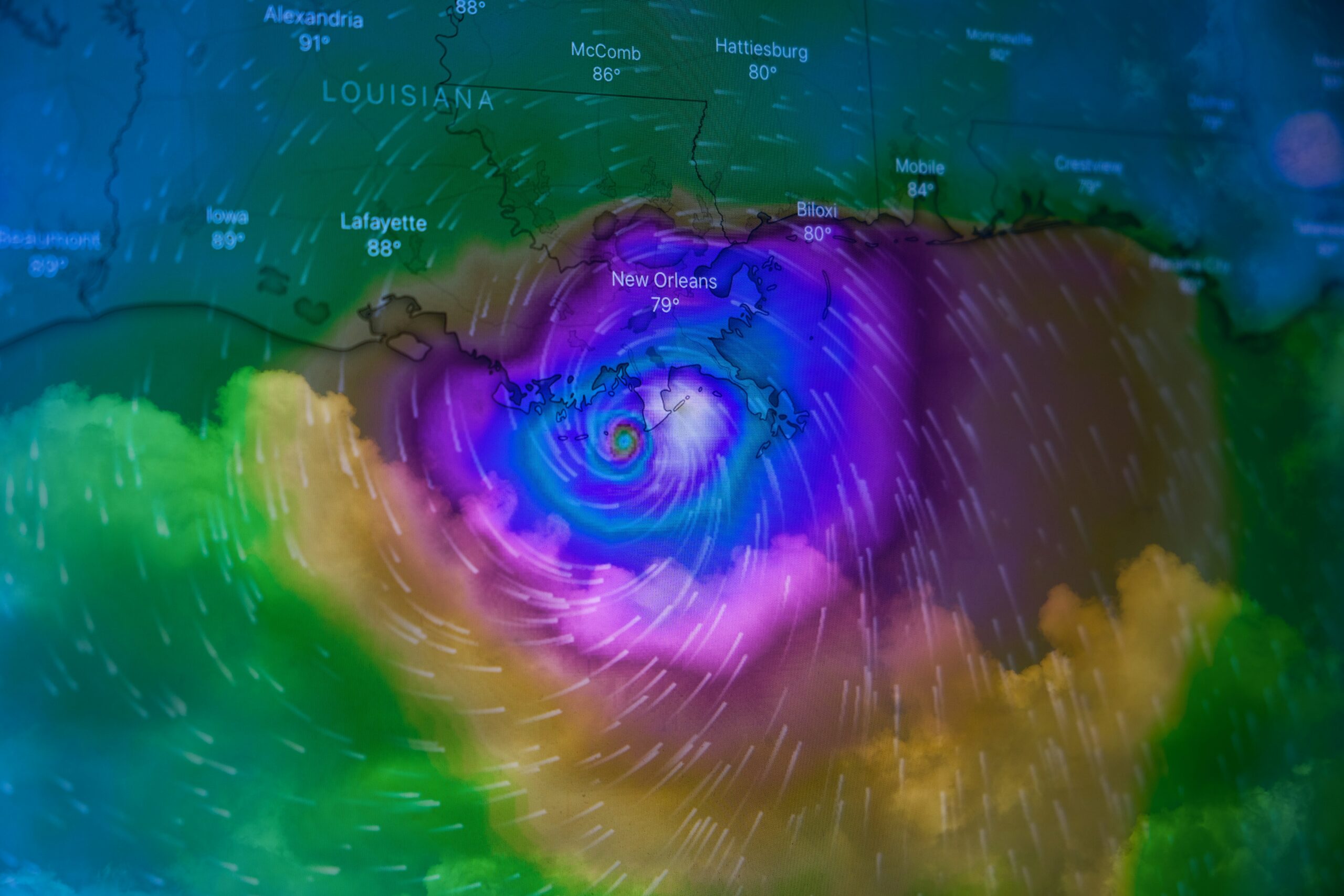Current Weather in Sydney
The current weather in Sydney reveals a dynamic environment characterized by fluctuating conditions typical of the region. As of the latest observations, the temperature is hovering around 22 degrees Celsius. This mild temperature contributes to a comfortable atmosphere, though fluctuations throughout the day may occur based on various meteorological phenomena.
In terms of humidity, Sydney is experiencing a relative humidity level of approximately 65%. This humidity can lead to a noticeable stickiness in the air, particularly during the warmer parts of the day, which may affect outdoor activities. Individuals with plans to engage in outdoor pursuits should take into account the current humidity levels to prepare accordingly.
Wind speeds are recorded at around 15 kilometers per hour, coming predominantly from the east-northeast. These breezy conditions could promote a refreshing feel, especially along coastal areas, yet may impact activities such as sailing or other wind-sensitive ventures. Those planning to be outside are advised to keep an eye on the wind conditions, as sudden gusts can arise.
Apart from temperature, humidity, and wind, it is essential to acknowledge any significant weather phenomena affecting the area. Currently, there are reports of scattered clouds, but no significant storm activity is forecast for the day. This absence of severe weather allows for a stable environment, although localized showers cannot be entirely ruled out as the day progresses.
Given the described weather conditions in Sydney, individuals with plans for outdoor activities should remain adaptable. The combination of temperature, humidity, and wind speeds presents a benign yet humid day, conducive to enjoying outdoor experiences while maintaining awareness of potential changes in weather patterns. The current climate should stimulate planning for enjoyable activities while taking appropriate precautions against any minor developments in the atmosphere.
Tomorrow’s Weather Forecast for Sydney
Tomorrow’s weather forecast for Sydney indicates a combination of warm temperatures and potential rainfall, presenting a typical autumn climate for the region. According to reputable sources such as the Bureau of Meteorology (BOM) and Weatherzone, residents can expect a daytime temperature that peaks around 25 degrees Celsius. The evening temperatures will likely drop to a cooler range of approximately 16 degrees Celsius, so dressing appropriately is advisable for evening outings.
As for precipitation, the forecast suggests a possibility of light showers in the morning, with a chance of heavy rainfall developing by the afternoon. Current predictions estimate around 5 to 10 millimeters of rain, which may vary based on localized weather patterns. It is essential for individuals to stay updated on real-time weather alerts, as conditions can shift unexpectedly, impacting outdoor plans.
In general, individuals in Sydney should prepare for a mixture of warmth and wet conditions tomorrow, keeping an eye out for updates and making necessary adjustments to their plans. Engaging with trustworthy weather platforms will ensure that Sydneysiders are well-informed of any changes, thereby enhancing safety and comfort during the day.
Recent Storm Activity in Sydney
In recent weeks, Sydney has faced a series of severe storms that have notably impacted the local environment and infrastructure. The most significant of these storms occurred in early October, when a powerful weather system swept through the region, bringing heavy rainfall, strong winds, and even hail in some areas. The Australian Bureau of Meteorology reported rainfall amounts exceeding 100 millimeters within just a few hours, leading to flash flooding in several suburbs.
This intense storm activity resulted in widespread disruptions, including downed power lines and fallen trees, which in turn affected thousands of residents and businesses. Emergency services were mobilized to respond to numerous calls related to property damage and safety hazards created by the storm. Roads were submerged, and transportation networks faced significant delays, causing inconvenience for commuters. Particularly hard-hit areas included the north shore and parts of western Sydney, where local authorities worked diligently to clear debris and restore normalcy.
Additionally, the storm had long-lasting impacts on the environment, with the heavy rains causing soil erosion and contributing to sediment runoff into local waterways. This has raised concerns among environmentalists regarding the health of Sydney’s aquatic ecosystems. The resulting water quality degradation could affect marine life, disrupting the natural balance and potentially leading to further ecological issues. As a response, community clean-up efforts have been initiated, aiming to mitigate the storm’s effects and foster resilience in the area’s ecosystems.
Overall, the recent storm activity in Sydney serves as a reminder of the importance of preparedness and resilience in the face of extreme weather events. Local authorities continuously analyze data from these incidents to enhance their response strategies for the future.
Queensland Hail Storm Overview
The recent hail storm that swept through Queensland has left a significant mark on the region, showcasing the volatile nature of weather patterns in Australia. Occurring in early October, the storm was characterized by large hailstones, some measuring up to 10 centimeters in diameter. This extreme weather event primarily impacted southern and central Queensland, particularly in areas such as Brisbane, the Gold Coast, and further inland towards Toowoomba. Eyewitness accounts detailed scenes of damage, where vehicles were severely dented and rooftops were battered, leading to extensive property damage and disruption of services.
Emergency services were swiftly mobilized to respond to the aftermath of the storm, emphasizing the importance of preparedness in the face of such severe weather phenomena. In the wake of the storm, residents reported experiencing widespread power outages, fallen trees, and significant water accumulation in the streets as heavy rain accompanied the hail. Local authorities implemented cleanup efforts, with teams deployed to assess damage and provide assistance to affected families. This immediate response highlights the need for ongoing readiness in confronting unpredictable weather: a lesson elucidated by the recent events.
The severity of the storm raises pertinent questions about how such incidents can reverberate across state lines, notably affecting the weather conditions in Sydney and its surroundings. Meteorologists suggest that intense weather systems like these can influence atmospheric conditions, potentially leading to shifts in rainfall patterns and storm activity in neighboring regions. As climate variations become more pronounced, understanding the interconnectedness of weather events becomes increasingly crucial. Therefore, ongoing monitoring and assessment of weather systems in Queensland will be imperative in predicting future impacts on Sydney and the broader New South Wales area.
Severe Weather Alerts and Warnings
In Sydney and its surrounding areas, severe weather alerts and warnings are critical tools used by the Bureau of Meteorology (BOM) to inform the public about potentially hazardous weather conditions. These alerts can encompass a range of phenomena, including storms, heavy rainfall, flooding, and extreme temperatures. Each warning type has specific criteria and implications, which are designed to help residents prepare and respond effectively to impending weather events.
The BOM issues several levels of warnings: advice, watch, and warning. An advice message indicates that a weather event is occurring, while a watch signifies that conditions are favorable for severe weather. Conversely, a warning is a more urgent alert, indicating that severe weather is imminent or already occurring, and immediate action should be taken. Understanding these classifications is crucial for interpreting the risks associated with severe weather in Sydney.
During storm seasons, staying informed through reliable sources is paramount. Regular updates from the BOM provide not only current conditions but also forecasts and advice on how to remain safe. Residents are encouraged to monitor these advisories closely, especially when severe weather alerts are issued. This vigilance can significantly mitigate the impacts of extreme weather, ensuring both preparedness and safety within the community.
Moreover, community awareness plays a crucial role in managing severe weather risks. Sharing information about weather warnings can help ensure that everyone in the area stays informed, particularly vulnerable populations who may require additional assistance. By fostering a collaborative approach to weather preparedness, Sydney’s residents can enhance their resilience to severe weather events and protect themselves, their families, and their properties.
Understanding Weather Tools: BOM and Weatherzone
To accurately prepare for any changes in Sydney’s weather, utilizing reputable forecasting tools is essential. Among these, the Bureau of Meteorology (BOM) stands out as Australia’s national weather agency, offering a comprehensive array of services ranging from real-time updates to detailed short- and long-term forecasts. By visiting the BOM website, users can access vital information, including temperature predictions, rainfall forecasts, severe weather warnings, and interactive radar imagery. The BOM also provides insights into significant meteorological events, which can be beneficial for understanding the impact of storms and other severe weather phenomena.
Another valuable resource is Weatherzone, which specializes in delivering tailored weather information to Australian users. Weatherzone not only aggregates data from various sources, including satellite images and local weather stations, but it also presents the information in a user-friendly format. Features such as customizable notifications and mobile application access enhance the convenience of receiving real-time weather alerts, ensuring that residents remain informed about any shifts in the forecast.
When using these tools, it is crucial to evaluate the forecasts critically. This involves looking at multiple sources and understanding the terminology used in the reports. For instance, knowing the difference between “showers” and “thunderstorms” can influence preparedness efforts. Users should also pay attention to the percentage of chance of precipitation and the predicted intensity of rainfall, as these factors can greatly affect daily plans.
Additionally, both BOM and Weatherzone offer educational resources that explain how forecasts are developed. Familiarizing oneself with the scientific principles underlying weather predictions can assist users in interpreting alerts more effectively. Overall, leveraging services from BOM and Weatherzone will provide residents and visitors of Sydney with the necessary insights for planning activities and staying safe during inclement weather.
Impact of Storms on Local Communities
Storms have a profound effect on local communities, particularly in regions like Sydney and Queensland, where severe weather events frequently occur. These storms can lead to significant physical damage, disrupt daily life, and even pose serious risks to personal safety. The immediate aftermath often requires a robust community response to address the destruction and facilitate recovery.
Local authorities and residents typically adopt various preparedness measures before storms hit, aiming to minimize damage and safeguard lives. Emergency services often conduct awareness campaigns, encouraging residents to secure their properties, develop emergency plans, and stock essential supplies such as food, water, and medicine. In many cases, community centers transform into hubs for distributing information and resources, vital to enhancing public understanding of storm preparedness.
Once the storm has passed, local communities enter the recovery phase, which can be lengthy and complex. Residents often collaborate with local authorities to assess damage, clear debris, and restore essential services. Community resilience is put to the test during this time, as neighbors help one another by providing physical and emotional support. Local businesses also play a critical role, often offering assistance or relief efforts, underscoring the collective spirit of the community.
Furthermore, local governments implement recovery strategies that may include financial aid, infrastructure repairs, and counseling services. These initiatives aim to restore normalcy and promote long-term resilience against future storms. Ultimately, the impact of storms transcends immediate physical damage, influencing social cohesion and community dynamics, as residents unite to confront the challenges posed by extreme weather events.
Future Predictions for Weather Patterns in Sydney
As we examine the future of weather patterns in Sydney, several key factors emerge that will shape the climate in this vibrant city. Climate data and expert assessments indicate that Sydney, like many other regions, is experiencing notable shifts due to climate change. This global phenomenon has been linked to increased temperatures, altered precipitation patterns, and the frequency of extreme weather events.
One prominent trend in Sydney’s future weather is the likelihood of hotter summers, as observed in recent data analyses. The average annual temperature is expected to rise, potentially leading to more days of extreme heat. This shift could impact public health, energy consumption, and even local agriculture, as farmers will need to adapt to changing growing conditions. Additionally, an increase in heatwaves has been predicted, which may result in further strain on the city’s resources.
Moreover, the patterns of rainfall in Sydney are anticipated to undergo significant changes. Earlier predictions suggested that while overall rainfall might not drastically decline, the intensity and distribution of precipitation could vary, leading to heavier downpours during shorter durations. This could elevate the risk of flooding in some areas while contributing to drought conditions in others, significantly impacting both urban infrastructure and natural ecosystems.
Seasonal variations will also play a crucial role in shaping Sydney’s weather in the coming years. As climate change continues to influence global weather systems, regions such as Sydney may experience shifting seasonal patterns, which may alter the typical timings of weather events. Understanding these potential changes will be vital for urban planners and local authorities to ensure resilience against the emerging climate challenges.
Ultimately, as we look toward the future weather patterns in Sydney, it is essential for residents and policymakers to remain informed and prepared for a dynamic climate landscape. By leveraging climate data and expert knowledge, Sydney can better navigate the complex interactions of climate change and local weather trends.
Conclusion and Tips for Weather Preparedness
As we examine the expected weather conditions for Sydney in the coming days, it becomes evident that staying informed and prepared is of paramount importance. Anticipating sudden changes in weather, particularly storm developments, can play a critical role in ensuring safety for individuals and families alike. Tomorrow’s forecast suggests a continuation of erratic weather patterns typical of Sydney’s transitional seasons, which may include unexpected rainfall or severe storms.
To effectively prepare for these weather fluctuations, establishing a reliable source of weather updates is essential. Utilizing reputable websites and local news channels can provide timely information on approaching storms and changing weather conditions. Additionally, consider investing in a weather alert app that can notify you of significant updates in real-time. This proactive approach can assist in making informed decisions regarding travel or outdoor activities in Sydney.
Moreover, forming an emergency preparedness plan is crucial. Ensure that you have a kit ready with essential supplies, such as non-perishable food, bottled water, and first-aid items. It is advisable to familiarize family members with the plan and conduct regular drills, especially if living in areas prone to severe weather events. Make a list of emergency contacts, including local authorities and nearby hospitals, ensuring that every family member knows how to reach these resources quickly during an emergency.
Lastly, maintain an adaptable mindset. Weather in Sydney can be unpredictable, and being mentally prepared for rapid changes can lessen anxiety and ensure that you are ready to act in any situation. By implementing these tips and staying informed, residents can better navigate the dynamic weather conditions characteristic of Sydney.



